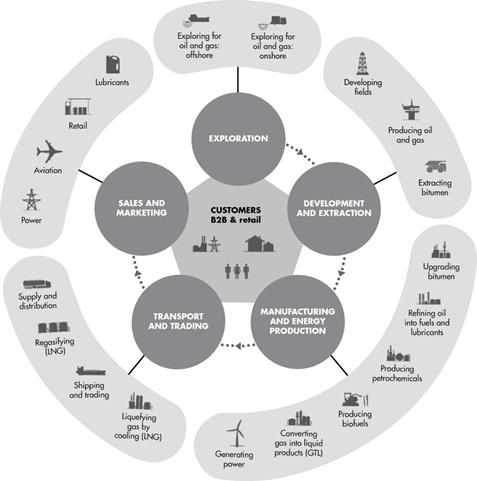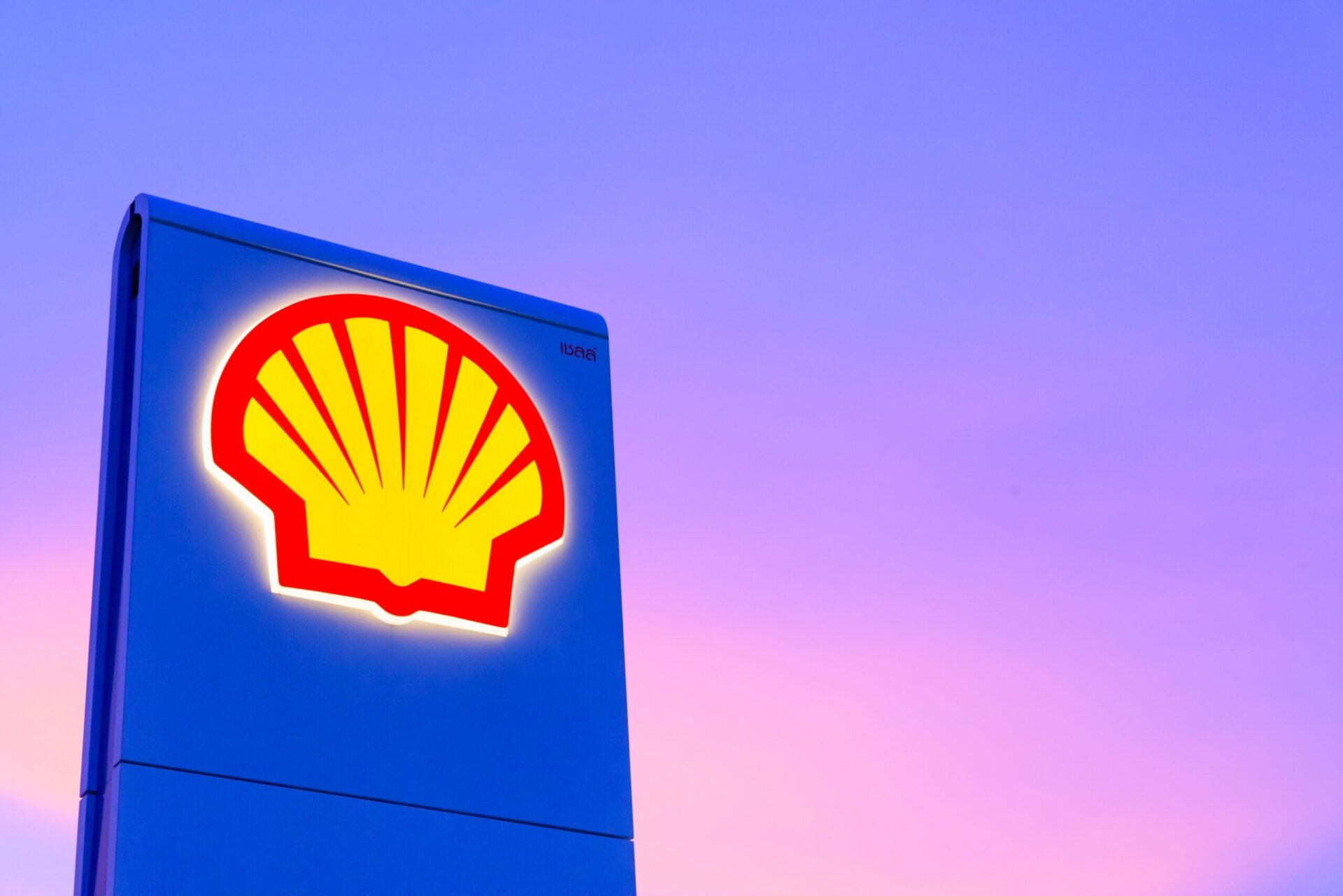Shell is a multinational energy company headquartered in The Hague, Netherlands. The company is one of the largest oil and gas companies in the world, with operations in over 70 countries and territories.
Shell was founded in 1907 as a merger between Royal Dutch Petroleum Company and the Shell Transport and Trading Company. Since then, the company has grown to become one of the world’s largest energy companies, with a focus on the exploration, production, and distribution of oil and gas.
Shell has a diverse range of operations, including upstream (exploration and production), midstream (transportation and storage), and downstream (refining and marketing) activities. The company also has a growing renewable energy business, with a focus on developing wind, solar, and biofuels technologies.
In addition to its core business activities, Shell is also committed to sustainable development and reducing its carbon footprint. The company has set ambitious targets to reduce its greenhouse gas emissions and is investing heavily in low-carbon technologies and renewable energy sources.
Shell is a publicly traded company, with shares listed on the London Stock Exchange, Euronext Amsterdam, and the New York Stock Exchange. The company is also a major employer, with over 90,000 employees worldwide.
Founding History of Shell
Shell is a global energy company that was founded in 1907 as Royal Dutch Shell, a result of the merger between Royal Dutch Petroleum Company and Shell Transport and Trading Company. However, the roots of the company can be traced back to the 19th century.
Royal Dutch Company
In the 1830s, a Dutch entrepreneur named Jean Baptiste August Kessler began exploring for oil in the Dutch East Indies (now Indonesia) and eventually discovered oil in Sumatra in 1885. In 1890, Kessler’s company merged with another Dutch firm, the Royal Dutch Petroleum Company, which had also been exploring for oil in the region. The new company was named the Royal Dutch Company for the Exploration of Petroleum Sources in the Netherlands Indies.
Shell Transport and Trading Company
Meanwhile, in 1892, a London-based shipping company called the Shell Transport and Trading Company was established by Marcus Samuel, who had begun importing shells from the Far East to use as decorative items. Samuel’s company later expanded into the oil business, importing oil from Russia and eventually setting up its own oil exploration and production operations.
The Merger
In 1902, the Royal Dutch Company and Shell Transport and Trading Company formed a partnership to develop oil fields in Russia, which were controlled by the Royal Dutch Company. The partnership, which was called “The Asiatic Petroleum Company,” proved successful, and the two companies decided to merge their operations in other parts of the world as well.
The merger of the Royal Dutch Petroleum Company and Shell Transport and Trading Company in 1907 created the company that is now known as Shell. The new company was split into two entities, Royal Dutch Shell plc in the UK and Shell Petroleum NV in the Netherlands, with each company owning 50% of the business.
Shell quickly became one of the largest and most successful energy companies in the world, with operations in over 70 countries. Over the years, the company has faced a number of challenges, including nationalization of its assets in some countries, price fluctuations in the oil market, and concerns about climate change and the transition to renewable energy. Despite these challenges, Shell has continued to adapt and evolve, and it remains one of the largest and most influential companies in the global energy industry.
Mergers & Acquisitions of Shell
Shell has a long history of mergers and acquisitions (M&A) that have helped the company to grow and diversify its operations. Some of the key M&A transactions involving Shell in recent years are:
BG Group: In 2015, Shell acquired BG Group in a deal worth $53 billion, making it one of the largest energy deals in history. The acquisition gave Shell access to BG’s significant natural gas reserves and LNG assets, as well as its deepwater oil exploration capabilities.
Repsol LNG Assets: In 2013, Shell acquired Repsol’s LNG assets in a deal worth $4.4 billion. The acquisition gave Shell access to Repsol’s LNG supply contracts, as well as its regasification plants in Spain.
InterGen: In 2018, Shell acquired full ownership of InterGen, a global power generation company, in a deal worth $1.2 billion. The acquisition gave Shell access to InterGen’s portfolio of gas-fired power plants, which complemented the company’s natural gas business.
First Utility: In 2018, Shell acquired First Utility, a UK-based energy supplier, in a deal worth $200 million. The acquisition gave Shell access to First Utility’s customer base and digital platform, which complemented the company’s existing retail business.
Sonnen: In 2019, Shell acquired Sonnen, a German manufacturer of home energy storage systems, in a deal worth an undisclosed amount. The acquisition gave Shell access to Sonnen’s expertise in battery technology and energy management systems, which complemented the company’s growing focus on renewable energy.
These acquisitions have helped Shell to diversify its operations and strengthen its position in key markets. By acquiring BG Group, for example, Shell became one of the largest players in the global LNG market, while the acquisition of Repsol’s LNG assets strengthened the company’s position in Europe. The acquisition of InterGen and First Utility, meanwhile, helped Shell to expand its presence in the power generation and retail markets, respectively. Finally, the acquisition of Sonnen allowed Shell to enter the rapidly growing market for home energy storage systems.
Overall, Shell’s M&A strategy reflects the company’s focus on building a diverse and resilient portfolio of businesses that can withstand the challenges and opportunities of the rapidly changing energy landscape. While M&A transactions can be complex and challenging, they can also provide significant benefits for companies that are able to execute them successfully.
Different business segments of Shell
Shell operates in three main business segments: Upstream, Integrated Gas, and Downstream.

Upstream: This segment involves the exploration and production of crude oil, natural gas, and natural gas liquids. The company’s Upstream activities include finding and developing new sources of energy, as well as managing the production and distribution of these resources. Shell operates in a number of different regions, including Europe, Asia, the Americas, and the Middle East.
Integrated Gas: This segment involves the production, liquefaction, and transportation of natural gas, as well as the production of liquefied natural gas (LNG) and gas-to-liquids (GTL) products. The Integrated Gas segment also includes the development of new gas projects, such as floating LNG (FLNG) and gas-to-wire (GTW) technologies.
Downstream: This segment involves the refining, marketing, and distribution of oil and gas products, as well as the manufacturing of chemicals and other petrochemical products. The Downstream segment includes Shell’s retail business, which operates over 45,000 service stations in over 70 countries worldwide.
In addition to these main business segments, Shell also has a growing New Energies business, which focuses on developing renewable energy sources such as wind, solar, and biofuels. The New Energies business also includes energy storage and electric vehicle charging solutions.
Overall, Shell’s business segments reflect the company’s focus on providing a range of energy solutions, from traditional fossil fuels to newer, more sustainable sources of energy. The company’s diverse operations allow it to remain competitive in a rapidly changing energy landscape, while its commitment to sustainability and reducing its carbon footprint reflects its broader goals of driving positive change in the industry.
How does Shell make money? – Revenue Streams of Shell
Shell generates its revenue from a variety of sources across its different business segments. Some of the key revenue streams for the company are:
Oil and Gas Production: Shell’s Upstream business segment is responsible for the exploration, production, and sale of oil and gas. This revenue stream is primarily driven by the company’s portfolio of oil and gas assets, which are spread across over 70 countries. Shell’s oil and gas production is sold to a variety of customers, including refineries, petrochemical companies, and utilities.
Refining and Marketing: Shell’s Downstream business segment includes its refining and marketing operations, which generate revenue from the production and sale of petroleum products, such as gasoline, diesel, and jet fuel. The company’s refining operations involve processing crude oil into refined products, which are then sold to customers through a network of service stations and wholesale channels. Shell is one of the largest oil refiners in the world, with a refining capacity of over 3 million barrels per day.
Chemicals: Shell’s Chemicals business segment is focused on the production and sale of chemicals and petrochemicals, such as polyethylene, polypropylene, and styrene. These products are used in a wide range of industries, including packaging, construction, and automotive. Shell’s chemicals business is one of the largest in the world, with a diverse portfolio of products and a strong focus on innovation and sustainability.
Natural Gas: Shell’s Integrated Gas business segment generates revenue from the production and sale of natural gas and natural gas liquids, as well as the production of liquefied natural gas (LNG) and gas-to-liquids (GTL) products. The company is one of the largest producers of LNG in the world, with a growing focus on developing new gas projects, such as floating LNG (FLNG) and gas-to-wire (GTW) technologies.
New Energies: Shell’s New Energies business segment is focused on developing new sources of energy, such as wind, solar, and biofuels. This revenue stream currently represents a relatively small portion of the company’s overall revenue, but it is expected to grow in importance as demand for renewable energy sources continues to increase. Shell is investing heavily in renewable energy technologies and has set ambitious targets to reduce its carbon footprint.
Overall, Shell’s revenue streams reflect the company’s focus on providing a range of energy solutions to meet the evolving needs of its customers. The company’s diverse portfolio of businesses allows it to remain competitive in a rapidly changing energy landscape, while its commitment to sustainability and reducing its carbon footprint reflects its broader goals of driving positive change in the industry.
What makes Shell so influential?
Shell is one of the world’s largest and most influential energy companies, with a long history of innovation and global leadership in the oil and gas industry. There are several key factors that contribute to the company’s influence and success:
Scale and reach: Shell operates in over 70 countries, with a global network of exploration, production, refining, marketing, and trading operations. The company’s scale and reach enable it to leverage economies of scale, share best practices, and capitalize on global trends and opportunities. With a diverse and integrated portfolio of businesses, Shell is able to capture value at every stage of the energy value chain, from exploration and production to refining and marketing.
Technology and innovation: Shell has a long history of investing in technology and innovation, from early advances in seismic imaging and drilling to recent developments in LNG, biofuels, and carbon capture and storage. The company’s technological expertise and research capabilities enable it to develop new solutions to complex energy challenges, such as reducing emissions, improving efficiency, and developing new low-carbon energy sources. Through partnerships with leading research institutions and startups, Shell is able to stay at the forefront of technological innovation in the energy sector.
Financial strength and stability: Shell is one of the largest and most profitable energy companies in the world, with a strong balance sheet and a history of delivering value to its shareholders. The company’s financial strength and stability enable it to pursue long-term growth strategies, invest in new technologies and businesses, and weather market fluctuations and industry challenges. Shell’s financial strength also gives it the ability to influence global energy markets through its pricing strategies and investment decisions.
Commitment to sustainability: Shell has made a commitment to achieving net-zero emissions by 2050, and has set ambitious targets for reducing its carbon footprint and increasing its investment in low-carbon technologies. The company’s focus on sustainability and the transition to a low-carbon energy system is not only a response to changing market conditions and regulatory pressures, but also reflects a recognition of the social and environmental responsibilities that come with being a global energy company. By leading the transition to a more sustainable energy future, Shell is able to influence the direction of the entire industry and contribute to a more prosperous and equitable world.
Overall, Shell’s influence and success are the result of a combination of factors, including scale, technology, financial strength, and commitment to sustainability. As one of the largest and most innovative energy companies in the world, Shell plays a critical role in shaping the future of the industry and contributing to global energy security and sustainability.
Financial Growth of Shell
Shell is one of the largest and most successful energy companies in the world, with a long history of financial growth and stability. The company’s financial performance is closely tied to the global energy markets, which can be highly volatile and subject to geopolitical and economic factors. Despite these challenges, Shell has managed to deliver strong financial results over the years, thanks to its diversified portfolio of businesses, strong brand recognition, and commitment to innovation and sustainability.
In terms of revenue, Shell’s financial growth has been impressive. In 2022, the company reported total revenues of $386 billion, up from $240 billion in 2016. This represents a strong performance given the challenges facing the energy industry in recent years.
Shell’s profitability has also been strong, with the company reporting a net income of $42 billion in 2022, up from $4.6 billion in 2016 , indicating that the company has been able to grow its earnings at a much faster pace than its revenues. This is largely due to the company’s focus on cost management, operational efficiency, and portfolio optimization.
In terms of capital expenditures (CAPEX), Shell has made significant investments in recent years to support its growth strategy and sustainability goals. The company’s CAPEX increased from $24 billion in 2016 to $29 billion in 2021, reflecting its commitment to investing in new technologies and businesses that can drive long-term growth and profitability. This includes investments in areas such as renewable energy, electric vehicle charging, and carbon capture and storage.
Finally, Shell’s financial strength and stability have been reflected in its credit ratings and dividend payouts. The company has maintained a strong investment-grade credit rating from major rating agencies, which reflects its financial stability and creditworthiness. In addition, Shell has a long history of paying dividends to its shareholders, with the company maintaining its dividend in the face of challenging market conditions and the COVID-19 pandemic.
Overall, Shell’s financial growth over the years has been impressive, reflecting the company’s ability to navigate a rapidly changing and volatile industry landscape. By investing in new technologies and businesses, managing costs and optimizing its portfolio, and maintaining a strong financial position, Shell is well-positioned to continue delivering strong financial results in the years ahead.
Competitors of Shell
Shell operates in a highly competitive industry, with a number of other major energy companies vying for market share and profitability. The company’s main competitors include:
ExxonMobil: ExxonMobil is one of the world’s largest energy companies, with a presence in oil, gas, and petrochemicals. The company operates in more than 50 countries and has a market capitalization of over $200 billion, making it one of Shell’s biggest competitors.
Read more about ExxonMobil – Inside ExxonMobil: Exploring World’s Largest Energy Corporation
Chevron: Chevron is another major energy company with operations in oil, gas, and petrochemicals. The company has a market capitalization of over $200 billion and operates in more than 180 countries, putting it in direct competition with Shell in many markets.
Read more about Chevron – Chevron Corp – The Energy Giant Like No Other
BP: BP is a global energy company with a presence in oil, gas, and renewable energy. The company has a market capitalization of over $100 billion and operates in more than 70 countries, making it a significant competitor to Shell in many markets.
TotalEnergies: TotalEnergies is a French multinational energy company with operations in oil, gas, and renewables. The company has a market capitalization of over $100 billion and operates in more than 130 countries, putting it in direct competition with Shell in many markets.
ENI: ENI is an Italian multinational energy company with operations in oil, gas, and renewables. The company has a market capitalization of over $60 billion and operates in more than 70 countries, making it a significant competitor to Shell in many markets.
In addition to these major competitors, Shell also competes with a number of smaller energy companies and independent oil and gas producers in various markets around the world. The industry is highly competitive, with companies vying for access to resources, market share, and profitability in a rapidly changing and volatile industry landscape. To remain competitive, Shell must continue to innovate, invest in new technologies, optimize its portfolio, and manage costs effectively.
To read more content like this, subscribe to our newsletter



